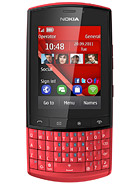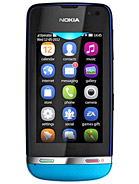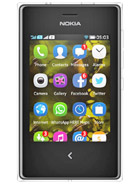Counterclockwise: remembering the not-quite-smartphone Asha phones
Judul Posting : Counterclockwise: remembering the not-quite-smartphone Asha phones
Link : Counterclockwise: remembering the not-quite-smartphone Asha phones
HMD intends to resurrect the Asha series, which brought back some memories. The Asha phones featured more advanced functions than your typical featurephone, which made them attractive for those who couldn’t afford a smartphone. Keep in mind that this story starts late 2011 – iOS, Android and even Symbian were still around, but options that delivered good experience were pricey.
Before we start, we should mention that the Asha line was a key part of Nokia’s “next billion” strategy – the plan to connect a billion people to the Internet, especially ones that don’t have a PC or cable Internet.
So Internet connectivity was a highlight of these phones. The browser was part of it, sure, but many Ashas had QWERTY keyboards to enhance messaging – not just texting, but WhatsApp, Facebook and Twitter too (how many featurephones can you name that supported those?).
First came the Nokia Asha 300. Its unassuming bar phone looks hide its best qualities – the 2.4″ screen was touch-enabled (resistive) and inside was a 1GHz processor, fairly powerful for the time.
This enabled web browsing over a 3G connection. The small screen made it a bit of a pain, but it was doable. The Communities app let you check with your friends on Facebook and Twitter or post photos from the 5MP camera on Flickr. Oh, and Angry Birds was pre-installed, remember that?

Nokia Asha 300
A month later the Nokia Asha 303 launched. Its comfy hardware QWERTY keyboard was a boon for heavy texters and the built-in Wi-Fi connectivity let you browse the web for free (the 300 lacked Wi-Fi). Nokia Maps was available, though only for pedestrian navigation and without voice prompts. That’s probably for the best, since lack of GPS meant that you were limited for the less-accurate Cell-ID.

Nokia Asha 303
At the end of 2011, WhatsApp released a beta version of its app for the Asha platform. Mail for Exchange came a few months later, allowing you to send and receive emails, sync your calendar and address book with an Exchange server. That made Asha suitable for a work phone and highly desirable in regions where WhatsApp had basically replaced SMS.
In 2012, the touch-only phones were added to the lineup. The Nokia Asha 311 ventured very close to smartphone territory, though its UI wasn’t as polished as Android or iOS. The 3″ screen (with capacitive touch now) had low resolution even for the time, 240 x 400px, but it did have Gorilla Glass. And while we appreciated the extra screen space, we didn’t love the touch QWERTY.
Multitasking was not available, but since native apps handled most of the essential functions, they simply worked in the background. The UI design was inspired by MeeGo and featured a notification shade and lock screen with notifications – “you won’t believe it’s not butter a smartphone”.

Nokia Asha 311
One of the last phones to come out before the end was the Nokia Asha 503. It reverted back to a 4:3 screen (3″ QVGA) and had a design not too far off the Lumia 520 – arguably the most successful Windows Phone, largely based on its price (it matched the Asha). It did improve the keyboard experience and some other grievances we had with previous Ashas.

Nokia Asha 503 Dual SIM
But at that time it was too late. If you ask us, Asha failed because of its hardware, not the software. A decent browser, some social networking and capable native apps meant you can get along with something like the 503. Studies often show that most people don’t install too many apps anyway.
But the small, low-res screen was never going to cut it. Or the camera that recorded video at 19fps. Or Nokia’s refusal to support navigation on Maps. Voice navigation was free on the Lumia 520, which could record 720p @ 30fps video to boot.
Towards the end, these featurephones could not compete with low-end smartphones in terms of bang for your buck. And that was the whole reason that the Asha line was created – by the end 2013 it simply lost the reason to exist.
Demikianlah Info postingan berita Counterclockwise: remembering the not-quite-smartphone Asha phones
Anda sedang membaca posting tentang Counterclockwise: remembering the not-quite-smartphone Asha phones dan berita ini url permalinknya adalah https://phonten.blogspot.com/2018/01/counterclockwise-remembering-not-quite.html Semoga info lowongan ini bisa bermanfaat.
0 Response to "Counterclockwise: remembering the not-quite-smartphone Asha phones"
Post a Comment